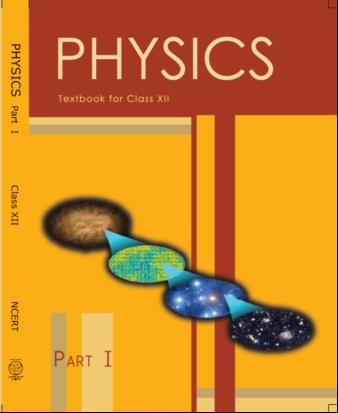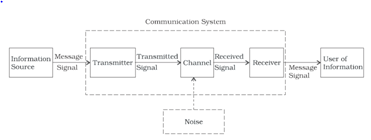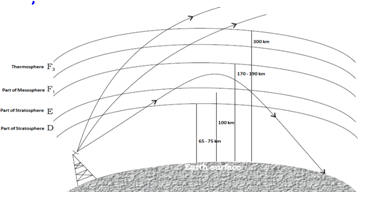CBSE class 12 Physics Chapter 15 Communication Systems notes in PDF are available for free download in myCBSEguide mobile app. The best app for CBSE students now provides you latest chapter wise notes for quick preparation of CBSE board exams and school-based annual examinations. Communication Systems class 12 Notes Physics are also available for download in CBSE Guide website.
Communication Systems Class 12 Notes Physics
Download CBSE class 12th revision notes for chapter 15 Communication Systems in PDF format for free and get score high in exams. These notes are prepared by team of expert teachers. The revision notes help you revise the whole chapter in minutes. Revision notes in exam days is one of the best tips recommended by teachers during exam days.
CBSE quick revision note for class 12 Physics, Chemistry, Maths, Biology and other subject are very helpful to revise the whole syllabus during exam days. The revision notes covers all important formulas and concepts given in the chapter. Even if you wish to have an overview of a chapter, quick revision notes are here to do if for you. These notes will certainly save your time during stressful exam days.
CBSE Class 12 Physics Revision Notes Download as PDF

CBSE Class 12 Physics Revision Notes Chapter 15 Communication Systems
-
Elements of Communication:

-
Two Basic Modes of Communication:
- Point to point
- Broadcast
- Point to Point Mode of Communication: Here, communication takes place over a link between a single transmitter and a receiver. Telephony is an example of such a mode of communication.
- Broadcast Mode of Communication: Here, there are a large number of receivers corresponding to a single transmitter. Radio and television are examples of broadcast mode of communication.
- Analog Mode of Transmission: An analog message is physical quantity that varies with time usually in a smooth and continuous fashion.
- Digital Mode of Transmission: A digital message is an ordered sequence of symbols selected from a finite set of discrete elements.
- Operational advantages of digital communication system over analog communication systems:
- An improved security message.
- Increased immunity to noise and external interference.
- A common format for encoding different kinds of message signals for the purpose of transmission.
- Flexibility in configuration digital communication system.
- Basic Terminology used in Electronic Communication Systems: Transducer, signal, noise, transmitter, receiver, attenuation, amplification, range, bandwidth, modulation, demodulation, repeater
- Undesirable Effects in the Source of Signal Transmission: Attenuation, distortion, interference and noise are the undesirable effects in the source of signal transmission.
- Bandwidth of Signals:
- The speech signal requires a bandwidth of 2800 Hz (3100 Hz – 300 Hz) for commercial telephonic communication.
- For frequencies produced by musical instruments, the audible range of frequencies extends from 20 Hz to 20 kHz.
- Video signals for transmission of pictures require about 4.2 MHz of bandwidth.
- A TV signal contains both voice and picture and is usually allocated 6 MHz of bandwidth for transmission.
- Bandwidth of Transmission Medium: The commonly used transmission media are wire, free space and fiber optic cable.
- Propagation of Electromagnetic Waves: For transmission over long distances, signals are radiated into space using devices called antennas. The radiated signals propagate as electromagnetic waves and the mode of propagation is influenced by the presence of the earth and its atmosphere. Near the surface of the earth, electromagnetic waves propagate as surface waves. Surface wave propagation is useful up to a few MHz frequencies. Long distance communication between two points on the earth is achieved through reflection of electromagnetic waves by ionosphere. Such waves are called sky waves. Sky wave propagation takes place up to frequency of about 30 MHz. Above this frequency, electromagnetic waves essentially propagate as space waves. Space waves are used for line-of-sight communication and satellite communication.

- Radio Wave Propagation is by Space Waves:

- Modulation: The process of changing some characteristics such as amplitude, frequency or phase of a carrier wave in accordance with the intensity of the signal is known as modulation.
- Types of Modulation:
- Amplitude modulation
- Frequency modulation
- Phase modulation.
- Amplitude Modulation: The amplitude of the carrier wave changes according to the intensity of the signal. The amplitude variation of the carrier wave is at the signal frequency .
- Production of Amplitude Modulated Wave: Amplitude modulated waves can be produced by application of the message signal and the carrier wave to a non-linear device, followed by a band pass filter.

- Modulation Factor: The ratio of change of amplitude of carrier wave to the amplitude of normal carrier wave is called modulation factor (m).
- Classification of Pulse Modulation: Pulse modulation could be classified as: Pulse Amplitude Modulation (PAM), Pulse Duration Modulation (PDM) or Pulse Width Modulation (PWM) and Pulse Position Modulation (PPM).
- Demodulation: Demodulation is the process of recovering the signal intelligence from a modulated carrier wave.
- Transmitter: It is a set up that transmits the message to the receiving end through the communication channel.
- Receiver: It is a set up that receives the transmitted signals from the transmission medium and converts those signals back to their original form.
- Detection of an AM signal: AM detection, which is the process of recovering the modulating signal from an AM waveform, is carried out using a rectifier and an envelope detector.
- Internet: It permits communication and sharing of all types of information between any two or more computers connected through a large and complex network.The application includes- E- mail, File transfer, WWW, E- commerce and Chat
- Mobile Telephony: The concept of this system is to divide the service area into a suitable number of cells centred on an office called MTSO (Mobile Telephone Switching Office). Each cell contains a low-power transmitter called a base station and caters to a large number of mobile receivers (popularly called cell phones).When a mobile receiver crosses the coverage area of one base station, it is necessary for the mobile user to be transferred to another base station. This procedure is called handover or handoff.
- Facsimile (FAX): It scans the contents of a document (as an image, not text) to create electronic signals.These signals are then sent to the destination (another FAX machine) in an orderly manner using telephone lines.Then the signals are reconverted into a replica of the original document.
CBSE Class 12 Revision Notes
- Physics
- Chemistry
- Mathematics
- Biology
- Accountancy
- Economics
- Business Studies
- Computer Science
- Informatics Practices
- English Core
- History
- Physical Education
To download Communication Systems class 12 Notes, sample paper for class 12 Physics, Chemistry, Biology, History, Political Science, Economics, Geography, Computer Science, Home Science, Accountancy, Business Studies and Home Science; do check myCBSEguide app or website. myCBSEguide provides sample papers with solution, test papers for chapter-wise practice, NCERT solutions, NCERT Exemplar solutions, quick revision notes for ready reference, CBSE guess papers and CBSE important question papers. Sample Paper all are made available through the best app for CBSE students and myCBSEguide website.
- Electric Charges and Fields class 12 Notes Physics
- Electrostatic Potential and Capacitance class 12 Notes Physics
- Current Electricity class 12 Notes Physics
- Moving Charges and Magnetism class 12 Notes Physics
- Magnetism and Matter class 12 Notes Physics
- Electromagnetic Induction class 12 Notes Physics
- Alternating Current class 12 Notes Physics
- Electromagnetic Waves class 12 Notes Physics
- Ray Optics and Optical class 12 Notes Physics
- Wave Optics class 12 Notes Physics
- Dual Nature of Radiation and Matter class 12 Notes Physics
- Atoms class 12 Notes Physics
- Nuclei class 12 Notes Physics
- Electronic Devices class 12 Notes Physics

Test Generator
Create question paper PDF and online tests with your own name & logo in minutes.
Create Now
Learn8 App
Practice unlimited questions for Entrance tests & government job exams at ₹99 only
Install Now